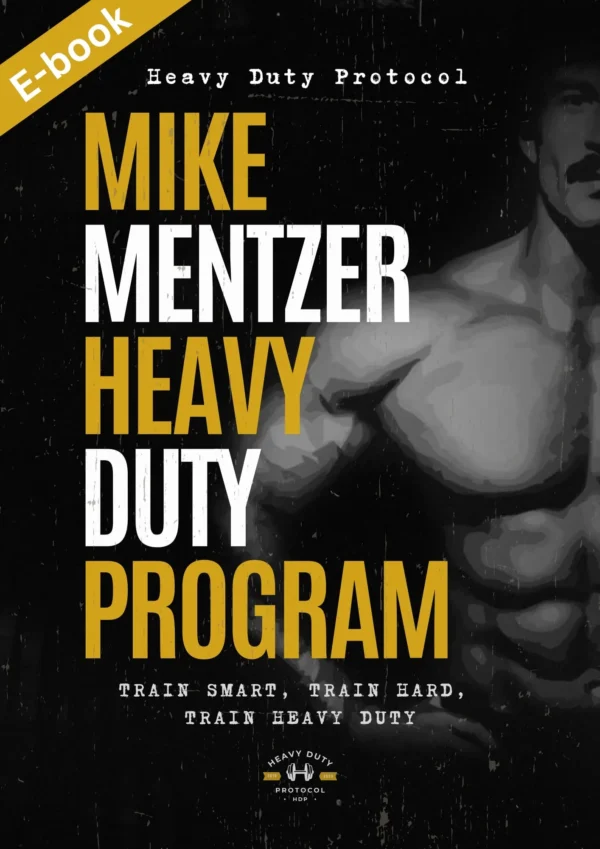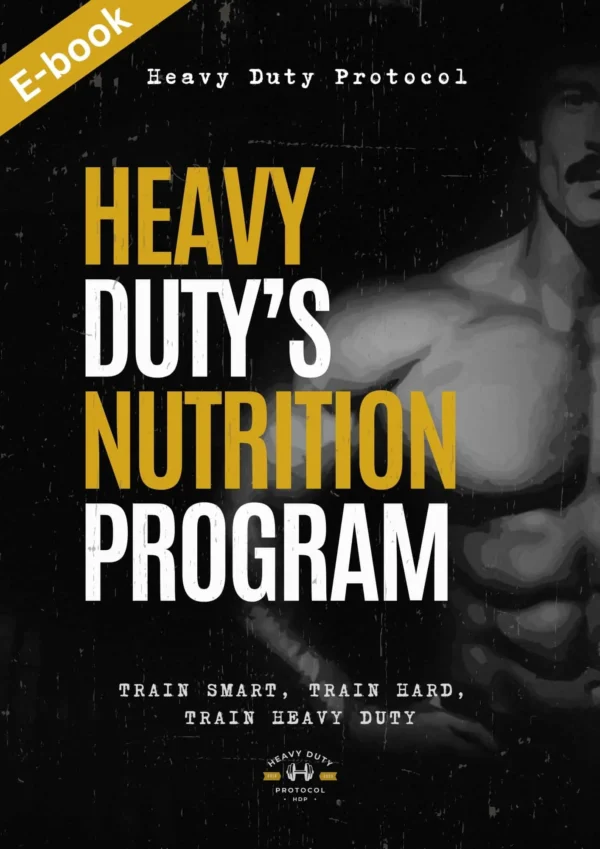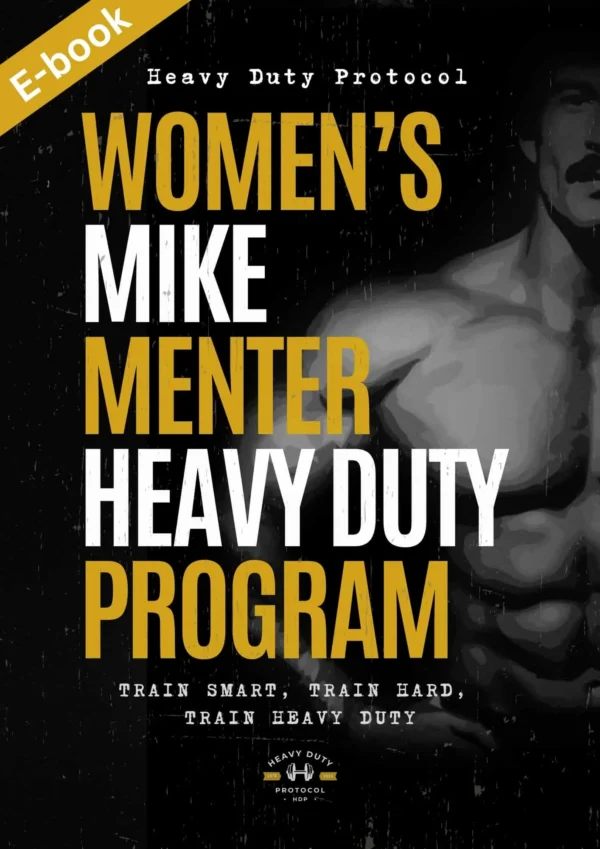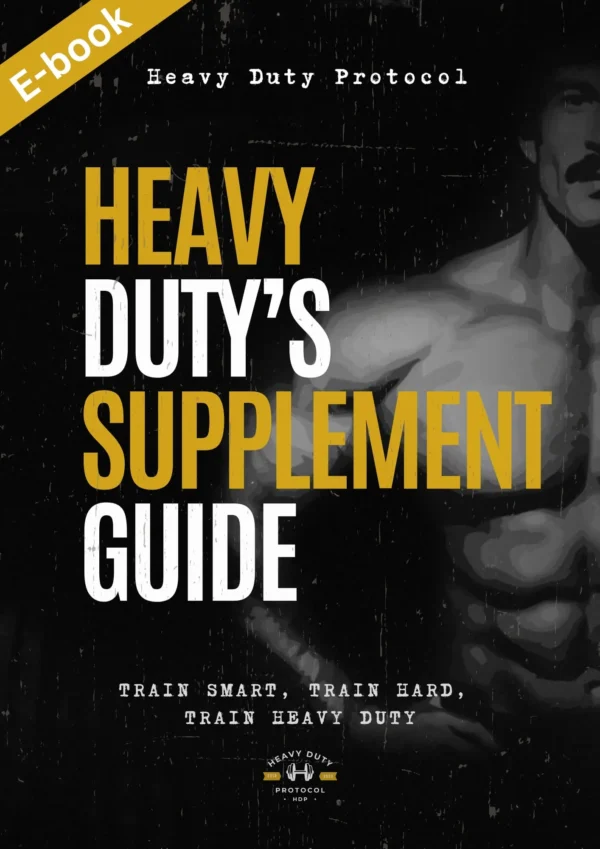Common Misconceptions About Heavy Duty Training
Heavy Duty Training, popularized by Mike Mentzer, has sparked widespread interest and debate in the fitness community. While its high-intensity and low-volume principles have been proven effective, myths and misconceptions persist, often deterring people from trying this revolutionary approach. This guide debunks common myths and provides clarity about what Heavy Duty Training truly entails.
Myth 1: Heavy Duty Training is Only for Advanced Athletes
The Truth:
Heavy Duty Training is scalable and suitable for all fitness levels, including beginners. While its intensity may seem intimidating, the principles can be adapted to individual capabilities. Beginners can start with lighter weights, fewer sets, and longer rest periods as they build strength and confidence.
Why the Myth Exists:
- Heavy Duty is often associated with advanced bodybuilders like Mike Mentzer, leading to the misconception that it’s exclusive to experienced athletes.
How Beginners Can Start:
- Focus on mastering form and technique.
- Start with one Heavy Duty workout per week to allow ample recovery.
- Gradually increase intensity as your body adapts.
Myth 2: Heavy Duty Training Causes Injuries
The Truth:
When performed with proper form and appropriate weights, Heavy Duty Training is safe and even reduces the risk of overuse injuries compared to high-volume training. Its focus on controlled, high-effort movements minimizes unnecessary strain on joints and ligaments.
Why the Myth Exists:
- Misinterpretation of “training to failure” as reckless lifting.
- Lack of emphasis on form and technique by some practitioners.
How to Stay Safe:
- Prioritize proper technique over heavy weights.
- Use a spotter or safety equipment for exercises like bench press or squats.
- Allow adequate recovery time between sessions.
Myth 3: Heavy Duty Training Doesn’t Build Endurance
The Truth:
While Heavy Duty Training primarily targets muscle strength and hypertrophy, it can improve muscular endurance as well. The high-intensity nature of the workouts challenges both strength and stamina.
Why the Myth Exists:
- Confusion between cardiovascular endurance and muscular endurance.
How to Build Endurance with Heavy Duty:
- Incorporate drop sets or rest-pause techniques to increase time under tension.
- Focus on progressive overload to improve both strength and endurance over time.
Myth 4: More Volume Equals Better Results
The Truth:
Heavy Duty Training challenges the traditional belief that more volume leads to greater gains. Instead, it emphasizes quality over quantity, showing that fewer, more intense sets can yield better results in less time.
Why the Myth Exists:
- Traditional bodybuilding programs often promote high-volume training.
- Misunderstanding of the science behind muscle growth and recovery.
Evidence Supporting Heavy Duty:
- Studies show that muscle growth is driven by intensity and progressive overload, not sheer volume.
- Adequate recovery, a cornerstone of Heavy Duty, enhances long-term gains.
Myth 5: Heavy Duty Training is Too Extreme
The Truth:
While Heavy Duty Training is intense, it’s not extreme when implemented correctly. The controlled nature of each set ensures safety and effectiveness, making it an efficient and sustainable approach to fitness.
Why the Myth Exists:
- Exaggerated stories about “brutal” workouts or the idea of “training to failure” being unsafe.
- Lack of understanding of recovery’s role in the program.
Balancing Intensity:
- Limit sessions to 2-3 times per week.
- Listen to your body and adjust recovery time as needed.
- Combine Heavy Duty with active recovery practices like stretching or light cardio.
Myth 6: Heavy Duty Training Neglects Recovery
The Truth:
Recovery is a cornerstone of Heavy Duty Training. Mike Mentzer emphasized that muscles grow during rest, not during training. The program’s low frequency ensures ample time for recovery, preventing overtraining.
Why the Myth Exists:
- Misunderstanding of the program’s structure.
- Comparing Heavy Duty to high-volume programs that prioritize gym time over rest.
Recovery Tips:
- Sleep 7-9 hours per night to support muscle repair.
- Maintain a balanced diet rich in protein, carbs, and healthy fats.
- Space out Heavy Duty sessions by 48-72 hours.
Myth 7: Heavy Duty Training Doesn’t Work for Everyone
The Truth:
While individual responses to training can vary, Heavy Duty principles are adaptable to different goals, body types, and fitness levels. Its core concepts of intensity, recovery, and efficiency make it universally applicable.
Why the Myth Exists:
- People may not fully commit to the intensity or recovery requirements.
- Lack of proper guidance when starting the program.
How to Make it Work for You:
- Customize the program to suit your goals (e.g., strength, hypertrophy, endurance).
- Seek professional guidance to ensure proper implementation.
- Track progress and make adjustments based on your results.
Final Thoughts
Heavy Duty Training is often misunderstood due to myths and misconceptions. By focusing on its core principles—intensity, efficiency, and recovery—this program offers a highly effective and time-efficient approach to fitness. Whether you’re a beginner or an experienced athlete, understanding the truth behind these myths can help you unlock the full potential of Heavy Duty Training.








































